Part 1: The Pacific Journal of Adam Ewing
The Story So Far…
The adventure begins on the high seas…or stuck on a tiny island with cannibals and no escape. Or so thinks the colonial-minded American in the first part of Cloud Atlas. We open Thursday, November 7th, in what seems to be the middle of a narrative. This section is, as the title alludes, a journal kept by a man journeying in the south Pacific. The diarist, Adam Ewing, is an American notary who had duties in New South Wales and has paid for a bunk on the ship Prophetess. He seems like an earnest young man, perhaps a bit judgmental of the people around him. He is currently stuck on Chatham Isle, a small island off the coast of New Zealand, for seven days while the ship is repaired. The indigenous people of the island are said by the white visitors to be cannibals. It is somewhere around 1850.
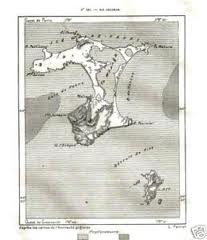
In the first episode, he comes across another white man, one Dr. Henry Goose, and it’s not a pleasant encounter. Goose, once a physician to royalty, says that he has been disgraced by the Marchioness Grace of Mayfair. He has a plan, though: he’s going to collect human teeth from along the coast of this isle, teeth that were apparently spat out by cannibals. He’s going to fashion a set of dentures for the Marchioness and then reveal in front of all of high society that she now eats with cannibals’ teeth. So, not the cuddliest fellow in the world, and perhaps not the sanest. Maybe not someone to cross either…
But he discovers that Dr. Goose is staying at the same inn and decides that his initial dislike of the man was premature. He’s yet to find another “gentleman” in this area of the world, either among the natives or the sailors on his boat, and he may just pass the next seven days playing chess and chatting with him.
The day after, Adam and Goose are out for a walk when they hear a “humming” coming from the “Indian hamlet” on the island. Following the sound, they come upon a public flogging, and Adam observes that while he and Goose are the only Whites there, three castes of Indians are watching: the chieftain, the gentry, and the slaves. The latter group is humming in either “empathy or condemnation” (p 6), and Adam, 1850s white guy that he is, observes that the slaves are pockmarked, inbred, and lazy. Then the slave being flogged, whose back is “hoarfrosted with many harsh years,” looks up from where he is bound to the A-frame, and shares a moment with Adam that shocks him. The slave looks right at him, eye to eye, “in recognition.” Adam is shaken by the humanity of the moment and he and Henry beat a hasty retreat.
On Sunday, Adam won’t break his fast in the whorehouse that is his inn, so he and Henry go to church first, a makeshift congregation run by a Mr. D’arnoq, and they break their fast with some of the congregation, including Mr. Evans, who tells them the colonialist story of the island’s original inhabitants. The Moriori, who call the island Rekohu, were apparently the most peace-loving people the world has known, people who were simply not war-like in any way. The combination of not fighting and having plentiful resources is not a good one, and the Maori from New Zealand commission a white captain to take them to Rekohu. They slaughter most of the Moriori and enslave the rest. As Adam observes, “the Maori proved themselves apt pupils of the English in the ‘dark arts of colonization’” (p. 14). Adam asks why the English had done nothing to stop the massacre, and Mr. Evans replies that the Maori fight likes sharks in a blood frenzy, and that the Maori hate all Whites. This story is challenged afterward by a drunk at the inn, who suggests that Mr. D’arnoq made it all up to justify his own thefts from and subjugation of the people and the land—it’s okay for him to do it because these people aren’t really from this island, but stole it from the original people. It’s unclear who might be right.
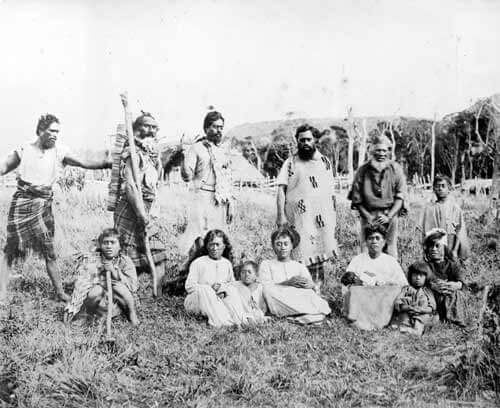
As Adam passes his seven days on Chatham, he gets into arguments about slavery (that it is better to “civilize” indigenous races rather than exterminate them), and learns that the captain of the ship suffers from gout and is trying to get Dr. Goose to come along on the rest of the voyage with them, free of charge, to act as ship’s doctor. Goose is adamant that he will decline.
Adam next decides to climb the Conical Tor, a mountain on the island. He makes the ascent but it is too foggy to see anything from the top, and on his way back down, he is startled by the sight of a Maori warrior hunting a hog. He falls hard to the bottom and hallucinates that he is back home but that his family shuns him because he can only speak in a native tongue. When he comes to, he realizes that God must have protected him as he fell, for he hasn’t broken anything. As he gets up he notices that he is in a “heathen shrine,” where the ancient trees are covered in faces, dendroglyphs both new and distorted with great age. Hanging on a branch is a heart, from which Adam sees a salamander burst forth. Convincing himself it belongs to an animal and not a human, he makes haste back to the inn.

At this point, we see the first and only footnote in this section, made by a J.E., presumably Adam’s son Jackson. This speaks to the legitimacy of the journal, that it is by a “real” person recording real events, and that perhaps what we are reading is a cleaned up, published version authorized and annotated by Adam’s son at some point in the future.
This is also the first point at which Adam brings up what he refers to as his “Ailment.” We don’t hear about any of the symptoms in the journal entry, only Henry’s diagnosis that it is likely a tropical parasite. Soon, the Prophetess is ready to make sail. They’ve picked up a few extra hands who are eager to get to California and its gold, and they also have a new ship’s doctor: Henry Goose. Adam doesn’t record (or know?) what has caused Henry’s change of mind, but he is relieved because now he can get proper treatment for his Ailment.
Adam becomes persona non grata when he is discovered by first mate Mr. Boerhaave to be drawing maps of gold veins for the sailors who wish to desert once they hit California, and finds himself in the doghouse. He’s further upset that Mr. D’arnoq has sold the ship a bunch of provisions, including “three great coils of hawser” (p. 22), which to Adam’s dismay are being stored in his bunk. It is only later that he discovers that something else is being stored in his bunk—an Indian stoway named Autua, the very person whom Adam saw being flogged earlier that week. He is one of the last of the Moriori, who as a boy set sail with the newly arrived ships and spent many years crisscrossing the globe. He makes a bad slave, he says, because he has seen too much. Returning home, he had no idea his people had been subjugated by the Maori. He was taken by a cruel Maori master from whom he has now escaped three times, this last time with the help of D’arnoq, who trusted that Adam would take him under his wing once they were underway.
Adam is, shall we say, less than pleased by D’arnoq’s presumption. He doesn’t want to be put in the middle of Autua’s story, and he’s already not in great standing with the sailors. He doesn’t want to be accused of harbouring a stoway. But he’s too good a guy to just toss Autua to the sharks (literally), so Adam pleads his case, pointing out that the Moriori is an adept sailor willing to work to earn his place on the ship. The captain tests Autua and is going to have him shot down from the mizzenmast when the sailors observe how deft a worker he is. Grumpily, the captain spares his life but refuses to pay Autua for the work he’ll do.
Meanwhile, Adam’s Ailment is getting worse, giving him migraines and dizzy spells, but he feels lucky to have Dr. Goose on hand. Goose claims the Ailment is a worm in Adam’s brain, and mixes him remedies free of charge that will kill and then disintegrate the parasite. Adam has hallucinatory nightmares, which Goose tells him is because the parasite is taking refuge in the parts of the brain that cause dreams. While Autua pledges his devotion to Adam for saving his life, Adam becomes more and more unhinged, seeing “a blizzard of purplish moths [that] seemed to issue from the cracks in the moon” (p. 39). The journal stops suddenly, mid-sentence, on Sunday December 8th, one month after the first entry that we see.
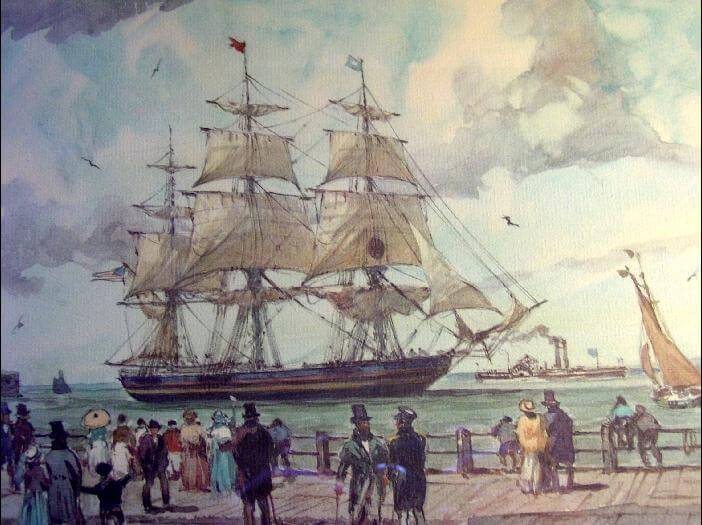
Some thoughts…
Cloud Atlas explores several major themes throughout its labyrinth of stories. In an interview with the BBC Book Club, Mitchell himself stated that “The book’s theme is predacity … individuals prey on individuals, groups on groups, nations on nations.” And this, perhaps, explains why the first story is set in the colonial 1850s. I know several people who have started and given up on Cloud Atlas because of this section, which is written quite consciously in the style of Herman Melville, replete with great words like “pellucid,” “admixture,” “extirpation,” and “valetudinarian.” Mitchell’s mimicry here is excellent, his narrator’s winding sentence structure, use of ampersands throughout, and the casual racism, presented as totally self-evident, echo the writings of the era. Obviously white men are civilized and superior, according to this world view, and slurs abound, as characters refer to Polacks and half-blood mongrels. It makes for an uncomfortable read, especially, I find, because it’s all in the first person, and though Adam is somewhat more enlightened and understanding than those around him, it’s still difficult to see the world split into these hard, cold divisions of superior/inferior, dominator/subjugated. We will see this theme of predator/prey repeated in different ways throughout this book.
Further, because this is an excerpt from a journal, it’s not a traditional story arc. The characters are introduced in a haphazard fashion, many of whom are people who have probably been referred to in entries before November 7th’s. It seems a bit interminable, with no focus or narrative thrust. To me, the interest level picks up around the time of Adam’s fall. At this point he starts to see a glimmer of the Moriori as a people who have been on the island since time immemorial, and in his hallucination he sees himself in the place of the outsider, shunned by his family and society. We also start to hear about Adam’s suspicious “ailment” after his fall, which only gets worse after the questionable Henry Goose appears on the scene. Goose is an enigma, first refusing to go on the voyage and then appearing on the boat, first searching for human teeth to disgrace an enemy then attending to Adam free of charge.
The major motif of ascent/descent appears here as well, quite physically in Adam’s climb up and fall down the Conical Tor. This, too, we’re going to see a lot more of, literally and philosophically. This section of Cloud Atlas is set in a concrete, identifiable time and in a specific style that evokes the colonization and subjugation first of indigenous people by Europeans but also by one indigenous people by another. At a time when “civilization” is seen to be at its pinnacle, the people within it dominate and prey upon one another, both at the individual and societal level.
Finally, even though this is seen as a somewhat difficult to read section, there are absolute gems of language throughout. Consider this sentence: “The youngest dendroglyph is, I suppose, ten years old, but the elders, grown distended as the tress matured, were incised by heathens whose very ghosts are long defunct.” Beautiful.
The introduction to Cloud Atlas is but one iteration of a story that Mitchell is going to tell us in different ways, and it itself is not an introduction, starting in the middle of its own narrative. I get the sense here of vastness and of an implied cyclical nature that we’re going to explore further (as a very minor note, I wonder if the indigenous Autua’s name is itself a play on the mirrored and cyclical nature of the book. The name is a palindrome).
So, what do you think about the introductory section of Cloud Atlas?Did you enjoy it? Do you agree with this as the most successful way to start the novel? Does it make sense to challenge readers in this way? If you were David Mitchell’s editor, would you have trusted him not to drive away potential readers by starting with this section? What else? Let’s talk!
You might also like:
|
Turning 30: the 30 books that have shaped the reader and person I am |


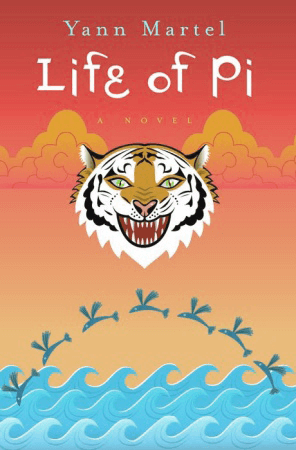
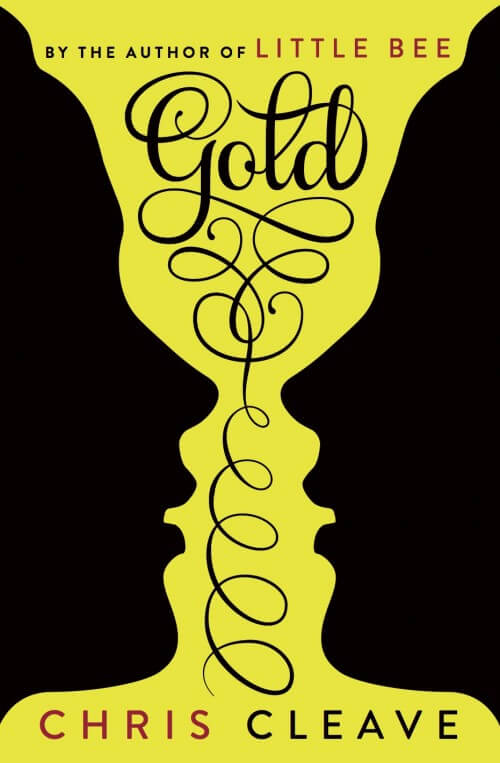
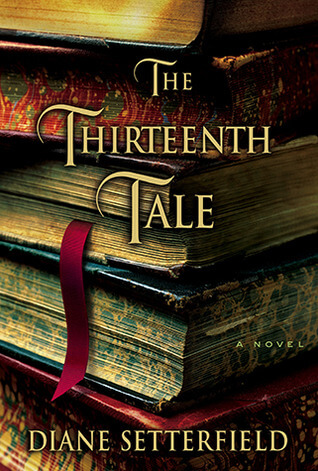
My vocabulary is no where near as mature as this book, but when I decipher words via a dictionary I’ve found the most incredible sentences, which I’ve underlined and copied to keep. I am deterred by the language, because the writing is so captive and I’m curious to see how it mixes with the rest of the stories. By far the best first chapter of a book I’ve read in a while. The whole thing is an enticing mystery!
This is very difficult to read in terms of language, vocabulary, and themes. It is brutal and cruel, and to transition mid-sentence to the next story is just plain awful. I cannot read this like this, I am going to read it un-stacked because I just cannot bear it. Should I read from the middle out, or all of adam ewing then all of zedelghelm then all of half-lives, etc… ?
Thank you so much! This was incredibly helpful and the way you write was enjoyable to read and made far more sense than the Ewing journal! Very helpful 🙂
Thanks a lot, now I finally understand it.
How does Adam Ewing’s Journal end up in Belgium?
This helped so much! I was confuse half of the time. 😀
Am glad I wasnt the only one, I read the whole chapter without barely understanding a thing…that first chapter was definitely a text and I can gladly say that I passed it.
I did not enjoy reading the first part of the book. I had to pause a few times and go over paragraphs several times in order to imbibe what I just read. As a reader it gave me a really hard time and I almost gave up.
I feel as if Mitchell began his novel with this section as a sort of ‘weeding out’ process. Perhaps he wanted his readers to have a certain level of maturity, patience, and intelligence and viewed this as some sort of test. I’m in no way saying that Adam’s journal isn’t enjoyable, but perhaps a clever way of catering to a specific audience.
At the begining I found this section difficult . I almost gave up reading the book, but somehow I knew something great was coming and I got interested in the colonization and the slave theme, so I’m glad I kept on reading. I’ve read a lot of Jules Verne work and this section reminded me of some Verne’s books. I loved the setting, the Pacific islands are beautiful. I didn’t notice any evil in Dr. Henry, I thougt he was just a crazy Dr.
I know more than a few people who start section 1 and assume that the whole book will be like that, so they put it aside. I still think it’s a daring and controversial choice to open a novel, though I agree with Christa’s comment below that because this is such a strong, familiar example of predatory human behaviour, it makes a bold statement to start off the book.
I love that we start and end on islands in the ocean, with both Adam Ewing and Zachry!
Dr Goose’s strange meeting about the teeth put me on edge immediately, I feared for the worst from that point on.
I finally got my butt in gear and started reading this book…now to weigh in with my thoughts on Part 1:
I have to admit I struggled a lot with this first section. I was tripped up mostly by the style of writing, but also by the sort of disjointed story telling (which I suppose was to be expected, when it’s in the form of the journal). But I pushed forward.
I found Adam to be a peculiar character. I didn’t like him by any means but at the same time, he didn’t make me want to close the book and stop reading. His attitudes were annoying and condescension came through so strongly I wanted to reach through the pages and smack him a couple times, but his setting and his situation were interesting ones. It seemed like everything he did both made me like him and dislike him at the same time. For example, with the stowaway; on one hand, I was slightly appalled that he turned him in knowing he could be killed but on the other he provided him with clothes and spoke in his defence.
I hadn’t read the BBC Book Club interview before, but I can definitely see the themes Mitchell mentions, already shining through. And because of that I think that this was a successful launching point for this novel. Because when it comes to people trampling on other people, who isn’t familiar with colonization and the slave trade? I think it was a daring move, since I found the chapter quite difficult to read, but I think that those who picked up this tome of a book are probably up for the challenge.
I’m so glad your book arrived! Great points about Adam’s character. I think he’s a terribly difficult narrator for 21st-century readers to identify with, above and beyond the style of his writings. His thinking is so different from ours. I’m curious what you thought about Henry Goose and his role so far. I ask, because he’s referred to in a way in the next section that I didn’t pick up in my initial reading of this section, and I wonder if it was just me, or if the narrator of section two and other readers alike picked up on it.
The narrator of the second section I find wholly more likeable and yet a much worse person overall, which is a fun paradox.
Whew! Glad I wasn’t the only confused by the reference to Dr. Goose in the second section. I had myself doubting if I had missed something.
Otherwise, I didn’t have much trouble with Adam since it seemed to me that he was at least a little better the rest of people of his time (and especially FAR better than most everyone else he encounters!). He certainly wasn’t some grand hero, but a decent enough fellow, I suppose.
Good point about the paradox of next section. He really is kind of a worse person if you think about it, but still quite charming and likable despite that.
I find Adam to be rather pompous and boring, but with much more of a sense of fairness and far less racist than those around him. You’re right: he’s a decent enough fellow, especially given the time period.
I wonder at Frobisher immediately picking up on Dr. Goose’s evil intentions. Is this a deliberate nod to the possible connection between Adam Ewing and Robert Frobisher? Does RF immediately understand Adam’s situation better than we readers because he (possibly, maybe, tenuously) lived it himself?
I don’t have time to read this but am enjoying it vicariously through your posts. Your ease and fluidity with language is such a gift.
Thanks so much for such kind words, Patricia. That means a lot, coming from an author!
I am not actually participating in the read-a-long only because I am desperately working my way through a formidable stack of review material in these last few weeks of the summer. I read Cloud Atlas when it was first published and loved it. However, your project is dear to my heart and I want to congratulate you on this initiative. Your analysis is interesting and revealing and should add significantly to any reader’s appreciation of the book. This is something we dearly need in today’s literary world! Carry on bravely!
Thanks, Kerry! I know what that formidable pile looks like. If you have time to share a thought or two on the book in between projects, please do. (I did the initial introduction post specifically so I couldn’t chicken out of doing the readalong once I’d decided I wanted to do it. It’s a bit daunting, but I’m excited for it, and I hope to hear a lot of people’s thoughts on the book.)
Ack my copy still hasn’t come! I averted my eyes and didn’t read this post but I promise as soon as my book gets here I will make it a priority read and come back to share my thoughts!
Boo, and yay! Hope your copy gets to you soon.